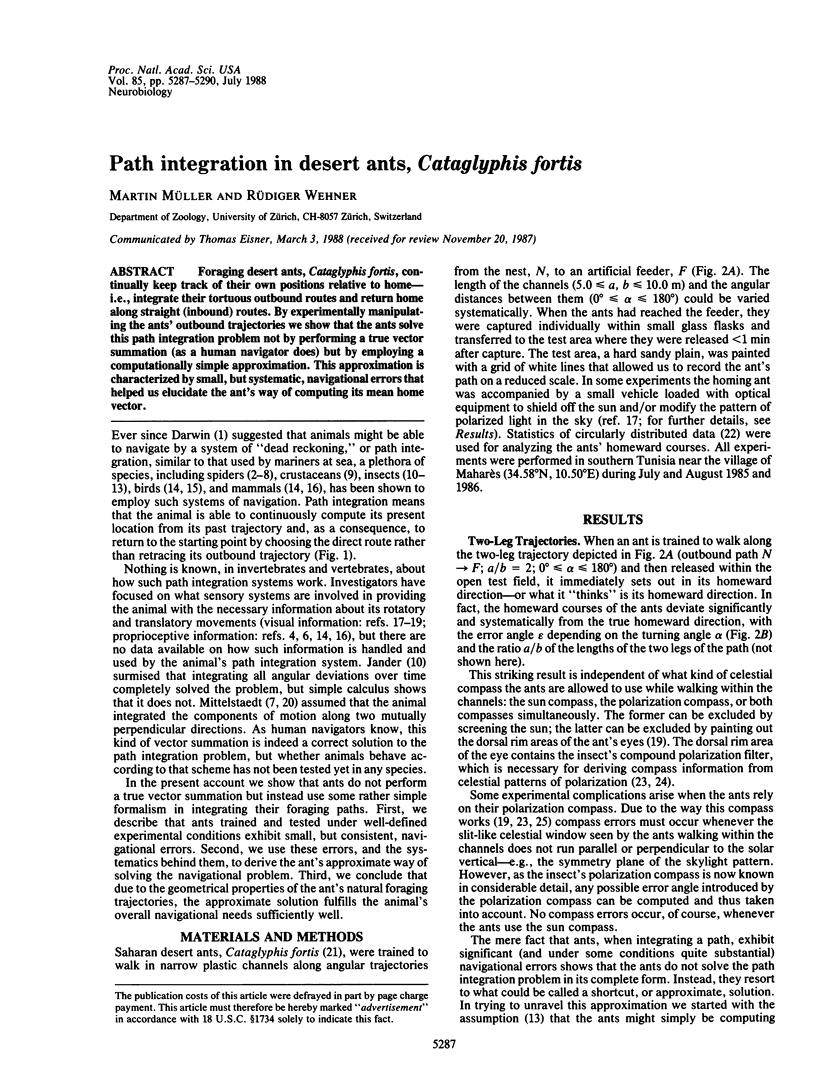Abstract
Foraging desert ants, Cataglyphis fortis, continually keep track of their own posotions relative to home— i.e., integrate their tortuous outbound routes and return home along straight (inbound) routes. By experimentally manipulating the ants' outbound trajectories we show that the ants solve this path integration problem not by performing a true vector summation (as a human navigator does) but by employing a computationally simple approximation. This approximation is characterized by small, but systematic, navigational errors that helped us elucidate the ant's way of computing its mean home vector.
Full text
PDF



Selected References
These references are in PubMed. This may not be the complete list of references from this article.
- Fent K., Wehner R. Oceili: a celestial compass in the desert ant cataglyphis. Science. 1985 Apr 12;228(4696):192–194. doi: 10.1126/science.228.4696.192. [DOI] [PubMed] [Google Scholar]
- Senses and environment. Symposium in honour of the 80th birthday of Prof. Dr. Drs. h.c. mult. Hansjochem Autrum. 5/6th March, 1987, München. Proceedings. J Comp Physiol A. 1987 Sep;161(4):511–631. [PubMed] [Google Scholar]


